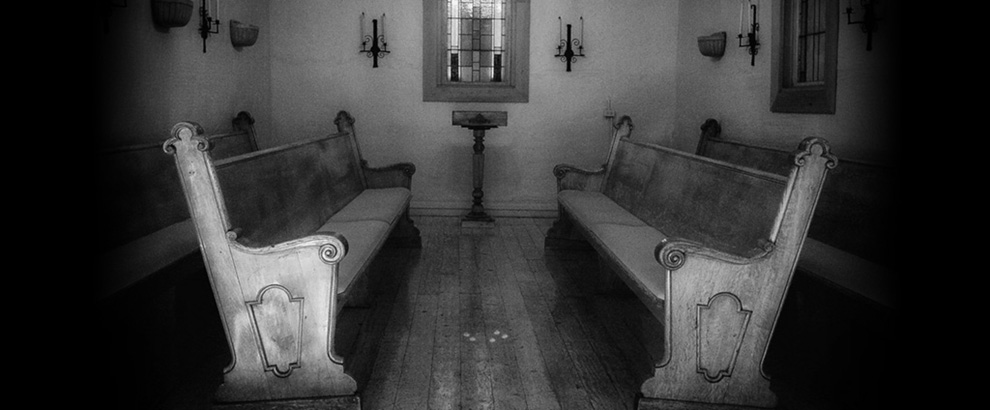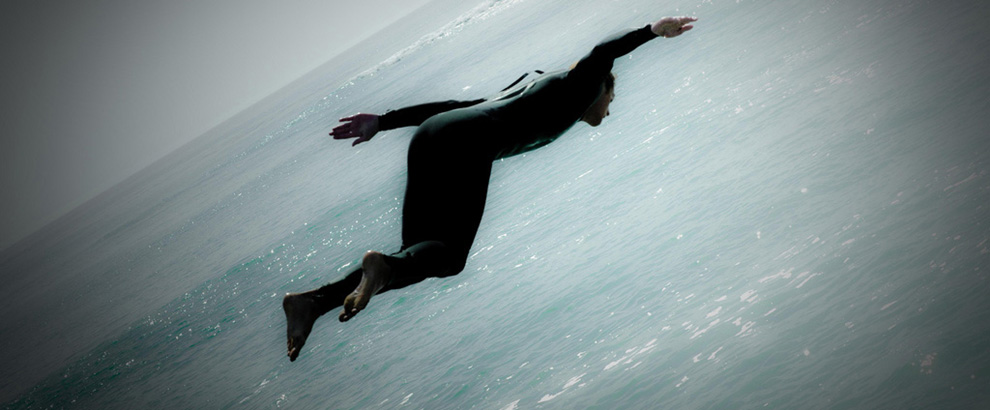
A beautiful woman—the matriarch in the sprawling, multi-generational television show “This is Us”—is sitting alone, gazing out the window of a luxurious passenger train car. What appears to be a porter—well-dressed and dignified—looms over her shoulder, but before he says anything, she informs him she is waiting for someone.
But then she launches into an impromptu reminiscence on her long-dead father’s love of such trains, and his promise that someday the two of them would journey on one. Whereupon she looks happily up at the porter and invites him to “sit with me.”
Soon, she is asking him to recite a poem they both apparently know, and it becomes obvious they are familiar with each other. Then, courtly as it is possible to be, he asks, “Would you like to go to the bar car with me, Rebecca?”
Now she repeats that she is waiting for someone, and he replies, “I know.”
And he rises, inviting her to follow, and she does.
Rebecca, pictured on board the train in all her 30s-ish prime of vitality, is in actuality on her death bed, and this train is the setting of her final dreamscape as she prepares for her ultimate departure.
So begins the remarkable second-to-last episode of the critically and popularly acclaimed six-season run of “This Is Us,” the NBC television series that follows the Pearson family in an emotionally intense, flashback-upon-foreshadowing saga that at its worst is high-level melodrama and at its best earns viewers’ every tear with perhaps the most honest, raw, and psychologically nuanced depictions of the basic human struggle for identity within the family unit ever to grace the screen, large or small.
But before we levy any more well-deserved plaudits upon the show and its creators, let’s get back on that train.
***

***
The porter escorting Rebecca to the “bar car” is William, the birth father of her son, whom he had left abandoned, for many complex reasons, on a fire station doorstep hours after his birth many years before. The firefighter who discovered the infant had taken him to the nearest hospital, where, as it happens, Rebecca had just given birth to triplets, one of whom, a boy, was stillborn.
And into the nursery comes this abandoned neonate. Who happens to be black, there next to Rebecca and her husband Jack’s two surviving (and white) children, a boy and a girl.
This is the initial plot point that got “This Is Us” and the Pearson clan rolling through its 106 episodes of early death, accident, addiction, abandonment, illness, the quest for racial and sexual identity, divorce, war, physical impairment, teenage rebellion, failed businesses, the ravages of age…and no small amount of fierce, tender and complicated love.
All of it with lavish musical accompaniment (the series is a showcase for heart-tugging tunes) and emotion-spiking drama that some critics accused of being a tad more sentimental than necessary.
(“Kleenex lobby psyop” sniffed “Vanity Fair” magazine while going on to grudgingly praise the “narrative gymnastics” of the show’s storytelling power earlier this year.)
For this viewer, the epitome of those “narrative gymnastics,” in its very best sense, is the metaphor of the train in the series’ penultimate episode.

The person Rebecca is “waiting for” is her daughter, who is in Europe, frantically trying to get home in time to be there as Rebecca passes from this earth. That’s because Rebecca, pictured on board the train in all her 30s-ish prime of vitality, is in actuality on her death bed, and this train is the setting of her final dreamscape as she prepares for her ultimate departure.
As William escorts her into the bar car, we behold the noble and wise doctor who delivered her live babies and played such a vital, supportive role in the followup care not so much of the newly formed triplets, but of Rebecca and her husband Jack as they struggle to come to terms with grief over their loss and the almost eerie immediate “replacement” of the lost infant.
The doc is tuxedoed behind the bar and she asks for a drink that her father had promised her in the long ago, a wish finally fulfilled.
They exchange heart-felt remembrances and Rebecca manages just one sip of her drink before William reappears, and it is on to other members of her family in adjoining cars, all of it interspersed with flash-forwards to her death bed as a 70-something-year-old.
And so it proceeds, one car and person and memory set at a time.
In a time warp, actually, a final reckoning, both body and soul drifting now, caught halfway between heaven and earth, heaven being her soul awash in memory and gratitude, earth being her body finally releasing from its mortal encumbrance, to which it clings now by the barest tether—of awaiting her daughter’s arrival.
At show’s end, we found ourselves asking the emergent question: “Who would be on our train?”
Who would we seek to conjure there?
***

***
No one has ever come back from the dead to tell us what their last moments of consciousness and transition to an unliving state were like. (No disrespect intended to those who report experiences of near-death only to return.) So we know nothing about it scientifically.
Rather like religion, then, it is left to the imagination to bring poetic meaning and depth to the bathed-in-mystery experience of dying.
And in this, as in so many other matters enabled by the great emotional intelligence and psychological acuity of “This Is Us” creators and actors, the image of a dying person traversing train cars filled with the beloveds of one’s life seems utterly inspired.
Sure, it’s everyone’s dream to be able to say full-on good-byes to beloveds, to square accounts, express the gratitudes.
When we can do this consciously and verbally, all to the good—which is why there is good reason to live in gratitude, because truly, we never do know whether this may be the last time we see someone. (“If I should die before I wake…”)
But the question resounds: Who would be there in the forward train cars as we make our way to the end of the line? Who would we want there? Who should be there if we desire a full accounting of our lives?
Rebecca says personal good-byes to a goodly number but not all the seemingly thousands (O,K., dozens…) of family members who were chronicled by a team of scriptwriters who somehow found the screen time to lavish attention in emotional and dramatic detail upon all of them, across multiple phases of their lives. (Look-alike child actors were brought in to play each actor’s younger self, while makeup artists took care of credibly aging characters’ adult selves across some 30 years.)
But what about beloved friends? Mentors no longer in your life but having shaped it in myriad ways?
Once treasured relationships gone awry or simply drifted away, but no less (or perhaps even more) impactful for what it revealed about them, about you, about life itself in all its messiness and glory?
One could do worse than to reflect on such matters as an imaginative exercise, holding close to heart the world-and-soul-shaping power of the flesh-and-blood people who have shared in the construction project of your one-and-only Self that makes its way through and eventually out of this precious, heart-breaking and beautiful world.
***
***
Check out this blog’s public page on Facebook for 1-minute snippets of wisdom and other musings from the world’s great thinkers and artists, accompanied by lovely photography.
http://www.facebook.com/andrew.hidas/
Deep appreciation to the photographers! Unless otherwise stated, some rights reserved under Creative Commons licensing.
Elizabeth Haslam, whose photos (except for the books) grace the rotating banner at top of page.
https://www.flickr.com/photos/lizhaslam/
Library books photo by Larry Rose, all rights reserved, contact: larry@rosefoto.com
Train and sky by Michael Vesia, Montreal, Canada https://www.flickr.com/photos/vesiaphotography/
Train car by Jennifer Latuperis-Andresen, Cologne, Germany https://unsplash.com/@fraumuksch
Beach sunset by Andrew Hidas https://www.flickr.com/photos/andrewhidas/















First of all, I loved this series so much and savored each and every one of the 106 episodes! From Kevin’s journey of learning to love himself in order to really love someone else, to the amazing relationship between Randall and his strong and loving partner, Beth, to the way Toby and Kate grew together and eventually apart — I loved it all and did shed my share of tears both for sadness and joy! Uncle Nicky was a favorite of mine, as well as Deja! And of course, Miguel who we got to know better near the end of the series! The train metaphor of the last two episodes was especially poignant and I refuse to erase them from my “ recent recordings!” And it did make me think about who I would encounter on my train! Yesterday I attended a memorial service of a friend of Jim’s, and yours too I think! Her daughter spoke of death as getting on a bus, apparently a metaphor proposed by CS Lewis, and making the decision of what to take with you on your final journey! “Leave behind fear, sadness, struggles, and pain!” I like this image as well, and made me think about what I would like to leave behind when I get on that bus! Then made me think that maybe those things could be left a bit behind before we get on that bus, or train, or at least packed away in a suitcase tucked far away under the bed!
One of the striking features of watching the whole of this series over a slightly bingey several months was how often I changed my mind about my favorite character. After awhile I realized it’s like trying to determine your favorite child or family pet—in the end, you realize you love them all equally, for all kinds of reasons unique to them.
And though I could probably be dissuaded, I’m still staying for the moment with my notion that Kevin had the most difficult acting job, playing a not-all-that-great actor disappointed in his own career, pining for true love, and jaded by his own physical beauty and financial success, wearing all that within both the Kevin character and the Manny character within that character.
The other prevailing thought: I’m gonna miss these people, and am not at all sure I can bear seeing them in any other roles in the future.
WOW, great review Andrew (and Karen). I am not much of a TV guy (but love movies), although I know this is the “golden age” with streaming, etc. + the pandemic = lots of TV watching! There are so many superb actors and writers with the time to go deeply into long-form thanks to these new technologies. Your comments sure resonate with me and the importance of living in gratitude for ALL of it, taking care to express said gratitude as much as possible in all of our day-to-day encounters. In this spirit, I would also recommend the writing of Walter Mosley (who is a super successful crime-fiction writer that I’d never heard of!) – especially The Right Mistake, and The Last Days of Ptolemy Grey (which is now an excellent 6 part mini-series on Apple TV staring Samuel L. Jackson). These explore many of the same grand sweep of life issues; love, regret, redemption, etc primarily with African American characters. Ain’t it wonderful how the creative arts can sweep us away while reconnecting us at the same time!!
Golden age indeed, Kevin, though one interesting development with that seems to be that the bar is set ever higher, so we are much less tolerant of mediocrity or even “pretty good” media, which is pretty much not good enough these days! Thanks for directing me to the Mosley as well; will look forward to it & the series—most anything with Samuel L. Jackson is worth some time!
Kevin. Already scheduled Ptolemy grey on Apple +!